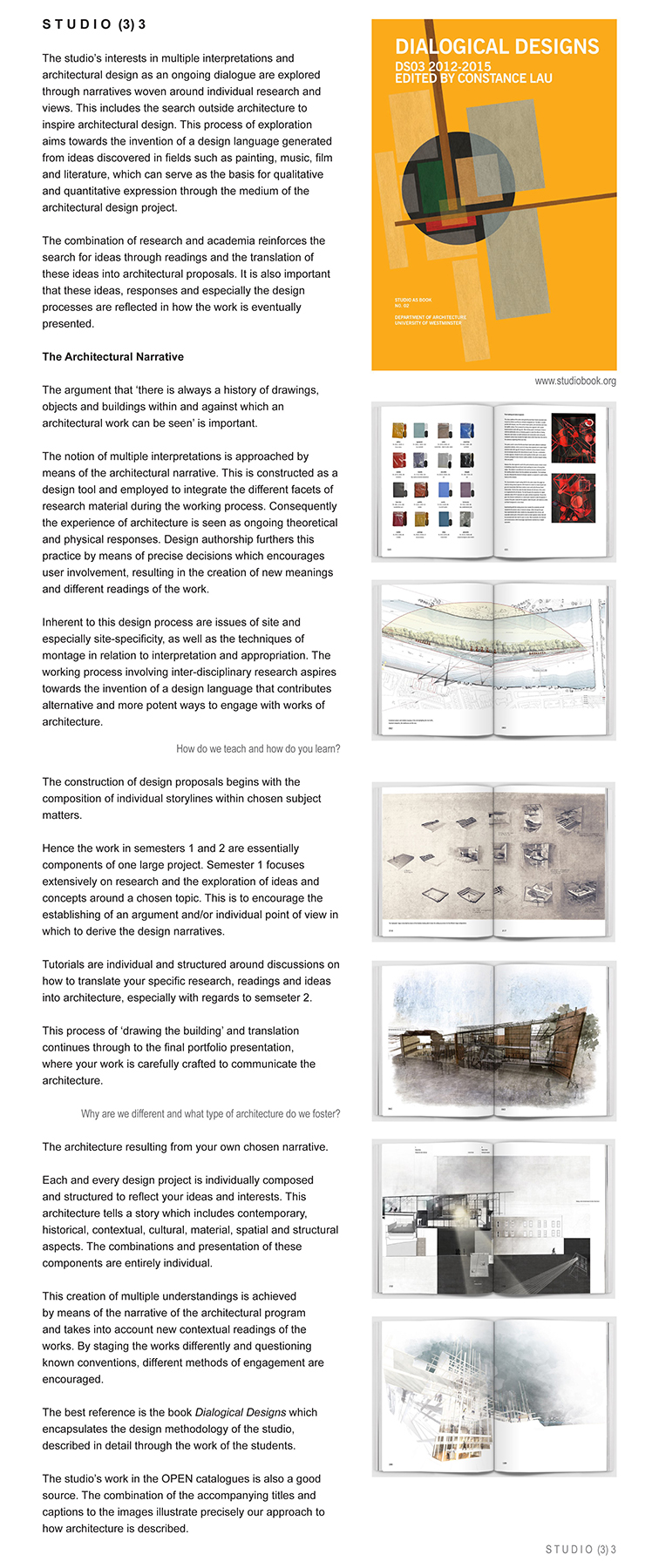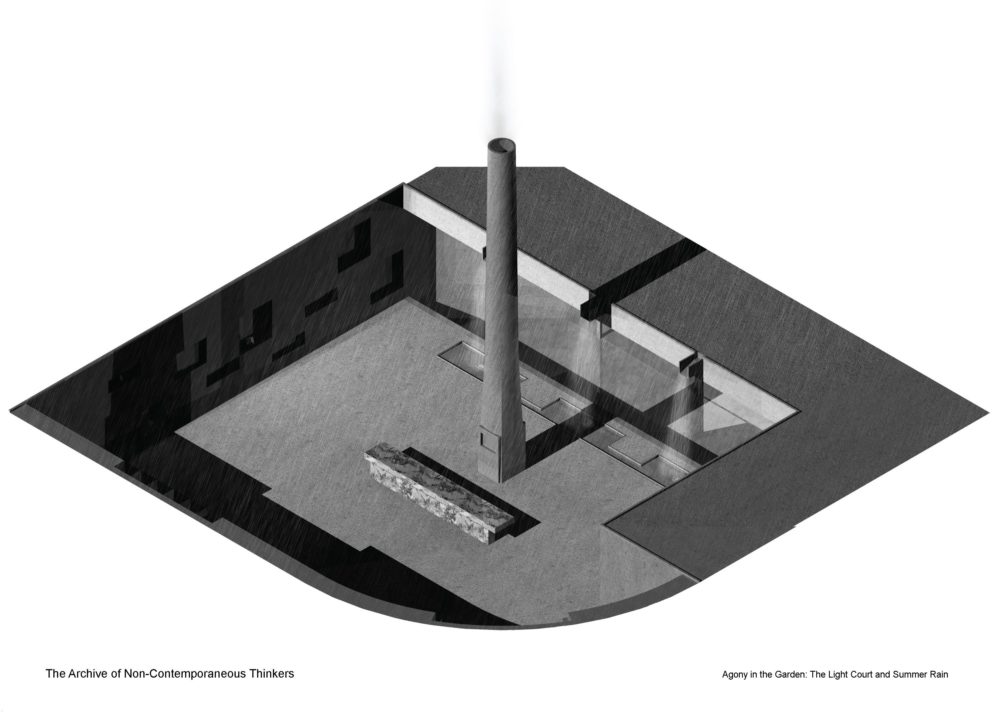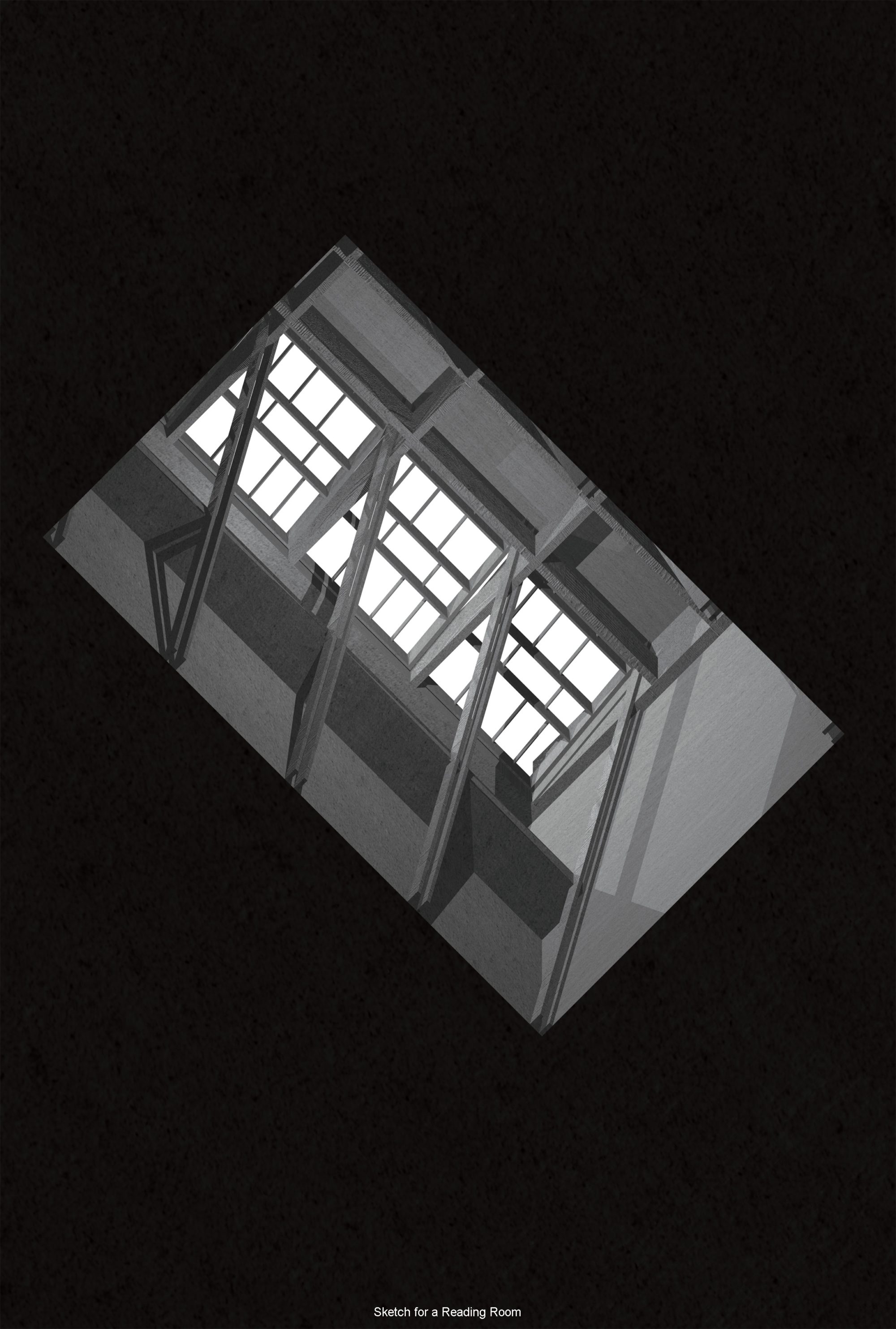Design Studio (Three) Three ARCHIVE
YEAR THREE – DS3.3
Tutors: Constance Lau & Alison McLellen
Constance Lau practices and teaches architecture in London and Singapore. The studio’s research interests in multiple interpretations and narratives are explored through the techniques of montage as well as notions of allegory. Narrative as an ongoing dialogue in architectural design is further articulated through projects in the book Dialogical Designs (2016).
Alison McLellan teaches and practices architecture. She founded Form_art Architects having worked with internationally acclaimed practices Stirling Wilford and Stanton Williams. Delivering museums, galleries, visitor and performing art centres, teaching is a natural continuation of Form_art’s work with artists and galleries, namely their current engagement with the Tate.
The Techniques of Montage
In The Open Work, Umberto Eco discusses the capacity for user intervention to shape the reading of the work. This concept is also demonstrated in Walter Benjamin’s The Arcades Project, described as ‘the blueprint for an unimaginably massive and Labyrinthine architecture’.
These ideas and arguments inform the studio’s interest in multiple interpretations, and especially the search outside architecture to inspire architectural design. The architectural narrative is further constructed as a design tool to integrate the different facets of research material during the working process.
First semester’s Building the Arnolfini explores the complex use of signifiers and perspective views by Jan van Eyck to portray the apparent narrative of a wedding. In pursuit of ‘openness’ this geographical, cultural and site-specific portrait was explored through the notion of an architectural montage where different readings radiate from a singular source. This created infinite opportunities for the work to be completed by the user.
The argument for different ways to approach the reading and meaning of a piece of work is furthered in semester two’s Artefice and Artefact. While the provenance of the Arnolfini portrait appears straightforward, this trajectory is not shared by many of the British Museum’s acquisitions. In this instance, ideas of ownership, authorship as well as the accommodation and display of highly contested items are explored. Hence the way the host is perceived is as important as the understanding of the artefacts which includes conventional concepts of ‘protector’, as well as the United Kingdom’s post-Brexit image. The argument that ‘there is always a history of drawings, objects and buildings within and against which an architectural work can be seen’ is important.
These readings allow the proposals for a new museum typology to address the ensuing shifts in the current disparate landscape of the British Museum’s chronologically, geographically and culturally displaced items.
- Umberto Eco,The Open Work, trans. by Anna Cancogni (Cambridge, Mass.: Harvard University Press, 1989).
- Walter Benjamin, The Arcades Project, ed. by Rolf Tiedeman, trans. by Howard Eiland and Kevin McLaughlin (Cambridge, Mass. and London: Belknap Press of Harvard University Press, 1999).
































